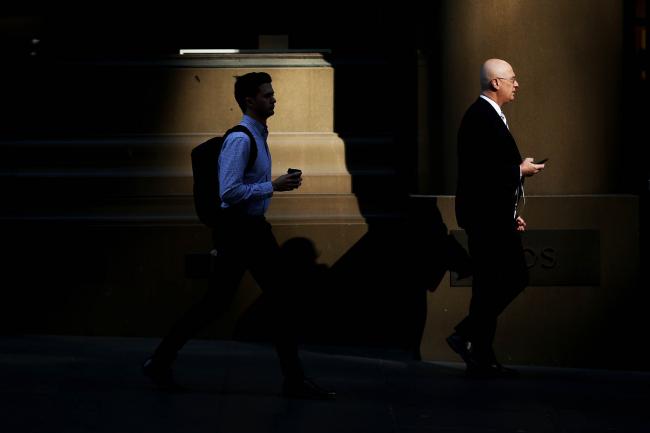(Bloomberg) -- Australia added fewer jobs than forecast in February and unemployment edged higher as more people sought work, suggesting the central bank is likely to keep interest rates unchanged.
Key Details
- Jobs rose 17,500 from January, when they advanced a downwardly revised 12,500; economists forecast 20,000 gain
- Unemployment rate climbed to 5.6%; estimate unchanged at 5.5%
- Full-time jobs increased 64,900; part-time employment fell 47,400
- Participation rate rose to 65.7%; economists predicted 65.6%
- Aussie dollar fell to 77.60 U.S. cents at 12:15 p.m. in Sydney from 77.81 cents pre-data
Big Picture
Employment is the main game in the Australian economy at present as policy makers expect record-low interest rates and rising investment to drive hiring and gradually encourage wage growth. Governor Philip Lowe says the jobless rate’s fall toward 5 percent -- the central bank’s estimated full employment level -- and inflation’s return to its 2.5 percent target midpoint will be only gradual, and policy will remain unchanged in the meantime.
Economists’ comments
- “It will take at least a year of continued jobs growth before we use up all the spare capacity in the labor market and start to see upward pressure on wage growth,” said Sarah Hunter at BIS Oxford Economics. “Wage rises are currently tracking inflation, leaving the average worker no better off than a year ago in real terms.”
- “The monthly figures for full and part-time employment have been excessively volatile of late,” said Callam Pickering at global job site Indeed, who previously worked at the central bank. “The trend figures point toward ongoing strength in employment but also suggest that full-time employment growth may be easing. It is far too early to be concerned but full-time employment remains one of the most important labor market measures and is worth keeping an eye on.”
- “There is no pressing need for the Reserve Bank to change interest rate settings,” said Craig James at Commonwealth Bank of Australia’s securities unit. “Under-employment and under-utilization rates continue to trend lower but still indicate that spare capacity is available in the job market. CommSec expects that the next move in rates will be up, but we can’t see a change happening until late 2018 at the earliest.”
Other details
- In the three months through February, under-employment rose 0.1 percentage point to 8.4%; the under-utilization rate -- the sum of unemployment and under-employment -- also advanced 0.1 point to 13.9%
- New South Wales, the most populous state, added the most jobs with 28,400 in February, and unemployment fell to 4.8% from 5.1%.
- Victoria, the next largest state that together with New South Wales has enjoyed an economic boom in recent years, led the losers shedding 11,300 positions.
- Unemployment in the island state of Tasmania jumped the most, climbing to 6% from 5.3%.
(Updates with comments from economists.)
